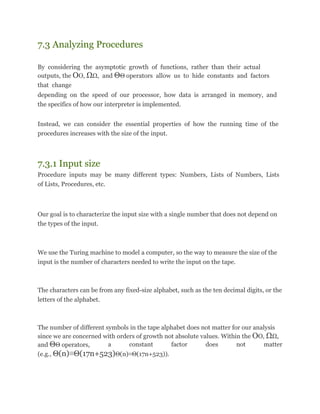This document discusses analyzing the procedures to determine their asymptotic runtime. It defines key terms like input size, worst case input, and steps. The input size is measured by the number of characters needed to represent it on a Turing machine tape. The runtime is estimated by counting the number of steps, where each step can simulate a constant number of Turing machine steps. We analyze the worst case input, which has the longest runtime for a given input size.






